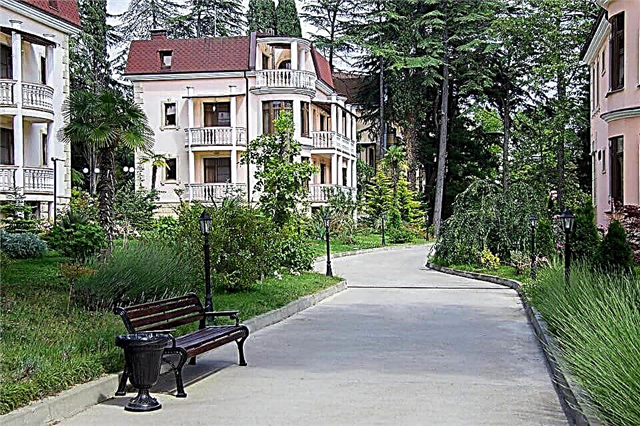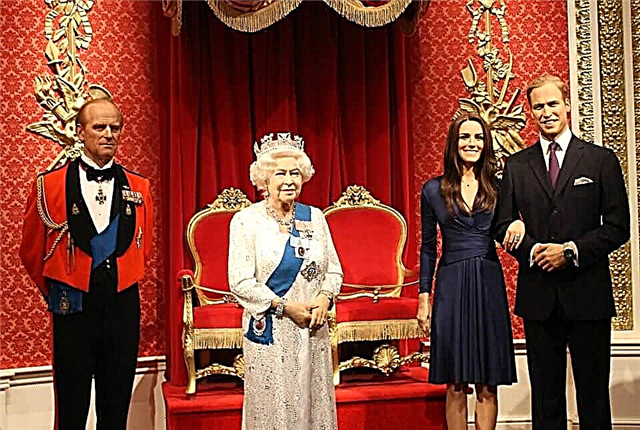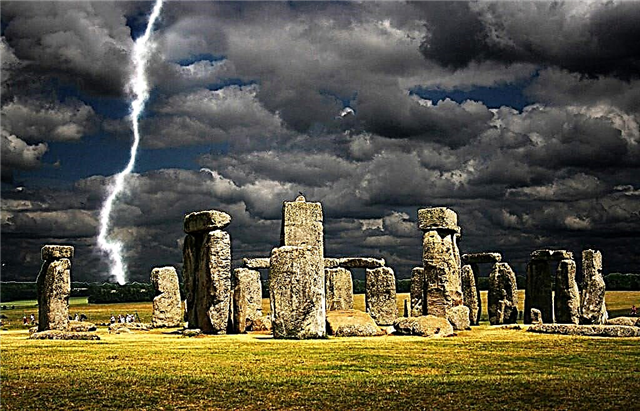Address: Russia, Yaroslavl region, Yaroslavl, st. Tchaikovsky, 1
Start of construction: 1665 year
Completion of construction: 1672 year
Coordinates: 57 ° 37'12.3 "N 39 ° 52'14.4" E
Content:
Outwardly, the beautiful five-domed church is a typical Yaroslavl posad church. The name of the temple, according to legend, stuck with it because the coast of Korotosl here was swamp and damp. The ancient church attracts pilgrims and tourists traveling to the cities of the "Golden Ring" of Russia, first of all, with unique wall paintings. The surviving multi-colored frescoes were made by the best Yaroslavl masters of painting of the 17th century.
The history of the church of St. Nicholas the Wet
There is a legend that the first wooden St. Nicholas Church in the city was built on the site of an ancient pagan temple, which was located on the bank of Korotosl, between its two tributaries, Pautov and Ershov streams. And the sacrificial stone, revered by the pagans, was laid in the church foundation.

View of the church from the south, the main entrance to the temple, on the left is the church bell tower
The first mention of this church was made in a letter signed by the last of the Rurikites on the Russian throne - Tsar Vasily IV of Shuisky. The document is dated June 15, 1610 and is addressed to the Spassky Monastery. It speaks of a temple built in the Spasskaya Sloboda on the juniper heath, granted by Tsar Vasily III. The church itself, as well as the settlement, was owned at that time by the largest male monastery in the Yaroslavl lands.
In various documents, where a wooden church is mentioned, it is already spoken of as the church of St. Nicholas the Mokry. Moreover, some believe that the reason for this is the wetland where it was built. According to another version, this name appeared because Saint Nicholas provided special assistance to drowning people and everyone in distress on the water. For example, the ancient icon of St. Nicholas, which the believers called "Nikola the Wet", has long been kept in the St. Sophia Cathedral in Kiev. It is dedicated to the baby saved by the saints from the waters of the Dnieper. Later, this Christian tradition was embodied in the plots of wall paintings in Yaroslavl churches.
By decree of the sovereign Alexei Mikhailovich, a stone church began to be built on this site in 1665, at a time when Iona Sysoevich was the Metropolitan of Rostov. The construction of the new church took seven years. Fortunately, history has preserved the names of the donors who made donations for the construction of this temple. These are the merchants of the Yaroslavl drawing room of a hundred Astafy Luzin and Andrei Lemin, as well as the townspeople Fyodor Vymorov and Stefan Tarabaev.

View of the church from the north
More than others, in the surviving documents you can learn about the family of Astafy Luzin. It is known that he was one of the "best merchants" of the Russian state. Near the Nikolskaya Church there were several courtyards and even stone chambers owned by this family. The merchants owned shops and warehouses in the city, as well as a lucrative tannery. And the son of Astafy Luzin - Semyon actively traded not only in Russia, but also abroad.
In 1672, all work on the construction of the church was completed, and the main temple altar was consecrated in honor of Nicholas the Wonderworker. Two weeks later, the southern throne was consecrated in honor of Metropolitan Alexy of Moscow. And 10 years later - in honor of the Martyr Barbara in the north aisle.
In 1673, an artel of Yaroslavl painters decorated the new church with frescoes. These masters were considered great craftsmen, since immediately after the painting of the church of St. Nicholas the Wet, the Metropolitan took them to Rostov. Talented iconographers managed to create on the walls of the church 660 pictorial compositions on biblical themes, portraits of Russian tsars and saints, wall images of the life of Nicholas the Wonderworker, as well as a chronicle of the construction of the temple. The painting "The Last Judgment" from the western church wall is recognized by experts as one of the best wall paintings in Yaroslavl of the 17th century.
In terms of the nature of the drawings and the manner of writing, the frescoes of the Nikolskaya Church are similar to the paintings in the temple of Elijah the Prophet, made seven years later. Therefore, art critics believe that the famous master of the 17th century Gury Nikitin with assistants could have participated in the painting of the Nikolsky Cathedral. Then, in the middle and at the end of the 19th century, the frescoes were renovated by Moscow artists twice. Unfortunately, the paintings on the western wing of the porch were lost in the 19th century, when the vault of the church was rebuilt.

In addition to rich frescoes, Yaroslavl craftsmen made special prayer places for the sovereign and patriarch inside the church. These were samples of monumental woodcarving, unique in design and quality.
In the early 40s of the XIX century, the church ceased to function as a parish church, and it was handed over to the military. Those who served in the training army regiments stationed in Yaroslavl (Nezhinsky, Fanagoriysky and Ostrovensky) began to pray here. The military began to bring their regimental icons and relics to the church. So, in the church of St. Nicholas the Wet, the uniform of Tsar Nicholas I was kept, since the king was assigned to the 11th Phanagorian grenadier regiment. The battalion icons, award banners and memorable rarities of the Suvorov times stood in the church in special showcases at places of honor.
In the 20th century, abrupt changes took place in the fate of the church. In 1918, during the White Guard uprising against Soviet power, a machine gun was placed on the church bell tower, holding the entire neighborhood at gunpoint. In response, an artillery battery of the Reds began to fire at him. As a result of the battle, the iconic building suffered significant damage. The greatest destruction took place on the tent of the bell tower and on the five domes of the main volume of the temple.
At the end of the 20s of the last century, the church was closed, and the premises began to be used as warehouses. Ten years later, by order of the authorities, the royal and patriarchal prayer places were moved to the Church of Elijah the Prophet, where at that time a museum of anti-religious propaganda was operating. Unique carved prayer places still remain in the Ilyinsky Church.

View of the eastern facade of the church
After the church had been abandoned for several years, in 1992 it was returned to the faithful. Then, large restoration and restoration work began here: cleaning the premises, clearing the surviving wall paintings, making a new iconostasis and creating new images for it. Carvers from Kostroma and artist Yuri Loboda worked on the iconostasis.
Architecture and interior decoration of the church of St. Nicholas Mokroi
The Church of St. Nicholas Mokroi is made in the best traditions of the Yaroslavl architects of their time. It is a cold, four-pillar, five-domed temple with a hipped bell tower. The high main volume does not have a base. It is interesting that in this iconic building, architectural solutions that were innovative for their time were also applied. For the first time in Yaroslavl architecture, a semi-closed system of one-story galleries was created in it, which were closed with removable wooden frames for the winter period.
In the 80s of the 17th century, the temple was decorated with glazed colored tiles on platbands and beam columns. And in the 90s - a vestibule was added to the western facade, ending in an octagonal tent. And it was also richly decorated with multicolor ceramics.
Of particular note is a unique example of Russian applied art - a forged lattice that adorns the church porch. It was made in the 17th century from S-shaped links ending in graceful flower buds.

The current state of the temple and the visiting regime
Nikolskaya church is active. Services are held there on holidays. Despite the work done, the temple needs a major restoration. Its bell tower is now in a slightly tilted state. And there are cracks on the walls and in the vault.Therefore, the parishioners wrote an appeal to UNESCO asking them to recognize the temple as a World Heritage Site.
How to get to the church of St. Nicholas the Wet
The church is located in Yaroslavl on Tchaikovskogo street, 1. Previously, this street was called Lyubimskaya.
By car. The federal highway M8 leads from Moscow to Yaroslavl. Within the city limits, it is called Moskovsky Prospekt. On it you need to cross the bridge over the Korotosl River. And then from the Epiphany Square - turn left onto Bolshaya Oktyabrskaya Street. Take it to Tchaikovskogo Street and turn left to the temple.
By train. From Moscow to Yaroslavl, express train trains reach in 3 hours 16 minutes. The journey by regular train takes from 4 to 5.5 hours. From Moskovsky Train Station in Yaroslavl, the distance to the Church of St. Nicholas Mokroi is 3.1 km. You can walk to it or take a taxi.











